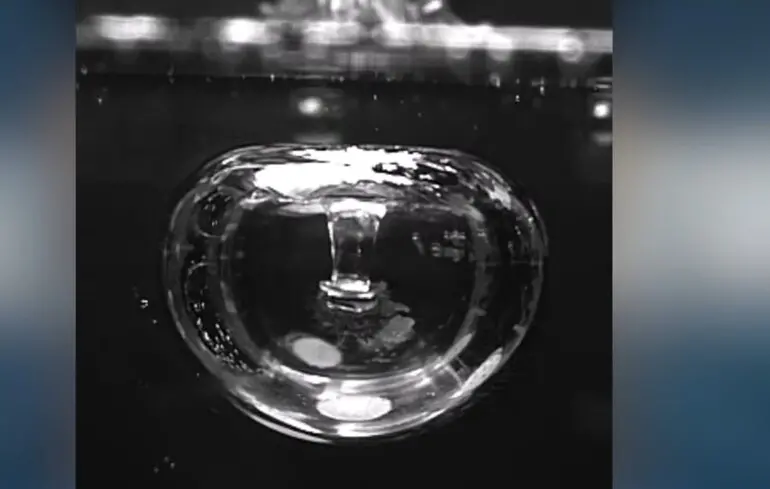Microbubbles Robots: Pioneering Future Medical and Motion Technologies

Researchers from the United States and China have achieved a significant breakthrough in nanotechnology by developing an innovative movement method for microscopic robots capable of replacing traditional injections.
This cutting-edge technique leverages cavitation phenomena—the rapid collapse of air or gas bubbles within a liquid—to generate shockwaves.
These micro-robots, dubbed ‘jumpers,’ can traverse considerable distances relative to their minuscule size — reaching heights of up to 1.5 meters and speeds of 12 meters per second in water.
Such technology allows precise control of device movements even in complex environments like labyrinths or microfluidic channels.
The working principle involves creating bubbles by heating a specially light-absorbing material with a laser, causing them to burst and produce a sudden shockwave.
By adjusting laser pulse intensity, angle, and timing, researchers can steer and modulate the thrust or movement of these micro-jumpers.
Inspired by natural phenomena such as fern spore dispersal and the jet propulsion of fish, this method surpasses traditional motion techniques based on magnetic fields or chemical energy, offering higher accuracy without the need for embedded power sources or mechanical parts.
The potential medical applications are especially promising: these micro-robots can penetrate through the skin, paving the way for needle-free injections and targeted drug delivery, including access to tumors.
Light-triggered control makes the technology minimally invasive, suitable for close-tissue procedures.
Beyond medicine, the devices could be used to explore inaccessible environments: moving along wet or uneven surfaces, functioning within tubes, or navigating in biological systems like blood and intercellular fluids.
Nonetheless, challenges remain, such as ensuring safe cavitation control within the human body to prevent tissue damage and overcoming the limited depth penetration of laser light in biological tissues—potentially through fiber-optic or infrared solutions.
Developing biocompatible materials, such as composites based on titanium dioxide, polypyrrole, and titanium carbide, is crucial for safety and effectiveness.
While still in conceptual phase, early results confirm the feasibility of cavitation-powered micro-movements, promising to revolutionize medical procedures and lead toward minimally invasive treatments.
This breakthrough could substantially impact various fields, opening new horizons for science and technology innovations.

